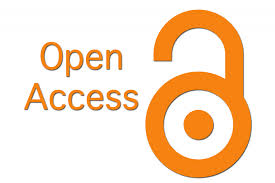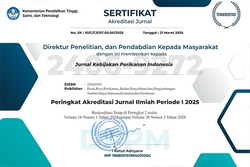CORAL BOND: STRATEGI PENDANAAN UNTUK KEBERLANJUTAN TERUMBU KARANG
Abstract
Indonesia memiliki ekosistem terumbu karang terluas di dunia dengan perkiraan sekitar 51.020 km² atau sekitar 17,95% dari total terumbu karang dunia. Namun faktanya, 71,2% terumbu karang Indonesia berada dalam kondisi buruk hingga cukup akibat perubahan iklim dan aktivitas manusia. Coral bond merupakan instrumen pendanaan inovatif berbasis pasar yang dirancang untuk mengatasi kesenjangan pembiayaan (financing gap) konservasi terumbu karang. Penelitian ini menggunakan pendekatan studi literatur dan analisis komparatif terhadap berbagai publikasi ilmiah, laporan kebijakan, serta studi kasus internasional terkait penerapan coral bond dan instrument blue finance lainnya. Melalui metode ini, dilakukan gap analysis untuk mengidentifikasi tantangan utama dalam penerapan mekanisme pendanaan berkelanjutan bagi konservasi terumbu karang di Indonesia. Berdasarkan hasil kajiam dirumuskan solusi konseptual dan usulan kebijakan yang berfokus pada penguatan tata kelola blue financing, pengembangan kerangka regulasi yang mendukung, dan peningkatan kapasitas kelembagaan dalam implementasi instrumen keuangan berbasis hasil (outcome-based financing). Hasil analisis menunjukkan bahwa Indonesia Coral Bond dengan nilai US$10 juta dapat menjadi instrumen non-sovereign dan non-debt yang efektif untuk mendukung target pencapaian 30% kawasan konservasi laut pada 2045. Strategi implementasi memerlukan penguatan baseline data, kapasitas kelembagaan, dan keterlibatan multi-stakeholder dengan menggunakan standar verifikasi IUCN Green List dan outcome-based payment mechanism.
Indonesia possesses the largest coral reef ecosystem in the world, covering approximately 51,020 km², or around 17.95% of global coral reef coverage. However, 71.2% of Indonesia’s coral reefs are in fair to poor condition due to climate change and anthropogenic pressures. The coral bond is an innovative market-based financing instrument designed to address the financing gap in coral reef conservation efforts. This study employs a literature review and comparative analysis, drawing on scientific publications, policy reports, and international case studies on the implementation of coral bonds and other blue finance instruments. Through a gap analysis, the research identifies the main challenges and limitations in applying sustainable financing mechanisms for coral reef conservation in Indonesia. Based on the findings, the study proposes conceptual solutions and policy recommendations to strengthen blue finance governance, develop a supportive regulatory framework, and enhance institutional capacity to implement innovative, outcome-based financing mechanisms. The analysis indicates that an Indonesia Coral Bond valued at US$10 million could serve as an effective non-sovereign and non-debt instrument to support the national target of achieving 30% marine protected areas by 2045. The proposed implementation strategy emphasizes strengthening baseline data, institutional capacity-building, and multi-stakeholder engagement, using the IUCN Green List verification standard and an outcome-based payment mechanism.
Keywords
Full Text:
PDFReferences
Antara News (2025). Indonesia luncurkan instrumen pendanaan untuk konservasi laut. ANTARA News. https://www.antaranews.com/berita/4902449/indonesia-luncurkan-instrumen-pendanaan-untuk-konservasi-laut. diakses pada 4 Oktober 2025.
Bernstein, S. (2014). Environment and Society Portal. (n.d.). Blast fishing in the Spermonde Archipelago. https://www.environmentandsociety.org/tools/keywords/blast-fishing-spermonde-archipelago
Bolton, P., Buchheit, L. C., Di Mauro, B. W., Panizza, U., & Gulati, M. (2022). Environmental protection and sovereign debt restructuring. Capital Markets Law Journal, 17(3), 307-316. http://dx.doi.org/10.2139/ssrn.4040395
Booth, M., & Brooks, C. M. (2023). Financing marine conservation from restructured debt: a case study of the Seychelles. Frontiers in Marine Science, 10, 899256. DOI:10.3389/fmars.2023.899256
Bosmans, P., & de Mariz, F. (2023). The Blue Bond Market: A Catalyst for Ocean and Water Financing. Journal of Risk and Financial Management, 16(2), 89-104. https://doi.org/10.3390/jrfm16030184
Chozin, M. (2008). Illegal but common: Life of blast fishermen in the Spermonde Archipelago, South Sulawesi, Indonesia (Master's thesis, Ohio University).
Dao, Y., Yusnaldi, & Kusuma. (2024). Penanggulangan praktik destructive fishing melalui optimalisasi pengawasan berbasis masyarakat: sebuah upaya menjaga keamanan maritim. Buletin Ilmiah Marina Sosial Ekonomi Kelautan dan Perikanan, 10(2), 163-172. http://dx.doi.org/10.15578/marina.v10.i2.14106
De Clippele, L., Brown, D. A., Diaz, L. A., & Lazuardi, M. E. (2023). Evaluating annual severe coral bleaching risk for marine protected areas across Indonesia. Marine Policy, 148, 105442. https://doi.org/10.1016/j.marpol.2022.105428
Ghafari, M. I. A. (2025). Evidence and impact of 2020 coral bleaching in West Lombok, Lesser Sunda Seascape, Indonesia. Journal of Marine Studies, 12(3), 45-62. https://doi.org/10.29103/joms.v2i2.21520
Ginting, J. (2023). Analisis kerusakan terumbu karang dan upaya pengelolaannya. Jurnal Kelautan dan Perikanan Terapan (JKPT), 1, 53-59. http://dx.doi.org/10.15578/jkpt.v1i0.12066
Giyanto., Abrar, M., Siringoringo, R. M., & Manuputty, A. E. W. (2014). Panduan Monitoring Kesehatan Terumbu Karang (Terumbu Karang, Ikan Karang, Megabentos dan Penulisan Laporan). COREMAP-CTI LIPI.
Giyanto., Mumby, P., Dhewani, N., Abrar, M., & Iswari, M. Y. (2017). Indeks Kesehatan Terumbu Karang. Pusat Penelitian Oseanografi.
Hadi, T. A., Abrar, M., Giyanto., & Prayudha, B. (2020). The Status of Indonesian Coral Reefs 2019. Jakarta: Research Center for Oceanography (RCO).
ICRI (International Coral Reef Initiative). (2024). New Indonesia Coral Bond. Retrieved from https://icriforum.org/indonesia-coral-bond-2024/
IUCN. (2024). Bridging global and local efforts: IUCN's upcoming support in Indonesia's effective marine conservation. IUCN Story, September 4, 2024.
KKP (Kementerian Kelautan dan Perikanan). (2025). Indonesia Coral Reef Bond. Retrieved from https://kkp.go.id/coralreefbond.html
March, A., Evans, T., Laing, S., & Raguain, J. (2024). Evaluating the world’s first sovereign blue bond: Lessons for operationalising blue finance. Commodities, 3(2), 151-167. https://doi.org/10.3390/commodities3020010
Medina, C., & Scales, I. (2023). Finance and biodiversity conservation: insights from Rhino Ceros Conservation and the first wildlife conservation bond. The International Journal of Conservation, 15(4), 234-251. DOI:10.1017/S0030605322001648
Norad (Norwegian Agency for Development Cooperation). (2025). Rhino Bond: How innovative finance is saving wildlife. https://www.norad.no/en/news/news/2025/the-rhino-bond-how-innovative-finance-is-saving-wildlife-and-empowering-communities/?utm_source=chatgpt.com
Nurdjaman, S., Nasution, M. I., Johan, O., Napitupulu, G., & Saleh, E. (2023). Impact of Climate Change on Coral Reefs Degradation at West Lombok, Indonesia. Jurnal Kelautan Tropis, 26(3), 451-463. https://doi.org/10.14710/jkt.v26i3.18540
Satria, A. (2009). Ekologi politik nelayan. Lkis Pelangi Aksara.
Standing, A. (2023). The financialization of marine conservation: the case of debt-for-ocean swaps. Development, 66(3), 234-245. State of Blended Finance 2023. Climate Edition.
The Commonwealth. (2020). Case Study: Innovative Financing – Debt for Conservation Swap, Seychelles' Conservation and Climate Adaptation Trust and the Blue Bonds Plan, Seychelles.
The Nature Conservancy. (2021). Belize Debt Case Study. Retrieved from TNC-Belize-Debt-Conversion-Case-Study.pdf
Triwibowo, A. (2023). Strategi pengelolaan ekosistem terumbu karang di wilayah pesisir. Jurnal Kelautan dan Perikanan Terapan (JKPT), 1, 61-66. http://dx.doi.org/10.15578/jkpt.v1i0.12048
UNEP (United Nations Environment Programme). (2024). Can "blended finance" help save the world's coral reefs? UNEP News and Stories, October 29, 2024.
Wahyudin, Y., Mahipal, M., Arkham, M. N., Riadi, S., & Lesmana, D. (2022). Potensi Nilai Kehilangan Jasa Ekosistem Terumbu Karang Pulau Pari, Kepulauan Seribu, DKI Jakarta. Aurelia Journal, 4(2), 251-264. http://dx.doi.org/10.15578/aj.v4i2.11882
World Bank (2024a). Indonesia Sustainable Oceans Program — Indonesia Coral Bond Project (Field Mission report). Retrieved from https://www.worldbank.org/en/programs/indonesia-sustainable-oceans-program/
World Bank. (2024b). Indonesia Coral Bond - An Innovative Ocean Financing Instrument. Open Knowledge Repository. Retrieved from https://openknowledge.worldbank.org/entities/publication/4a848fa6-9cb0-4d9d-91b1-e93bba59f224/full
World Economic Forum. (2025). A new age of innovative blue finance to protect Southeast Asia's ocean. WEF Stories, April 15, 2025.
World Population Review. (2024). https://worldpopulationreview.com/country-rankings/countries-with-coral-reefs?utm, diakses pada 25 Oktober 2025
Zabel, A., Nanhthavong, V., & Epprecht, M. (2025). Gaps between demand and supply of biodiversity impact finance in the Global South. Current Opinion in Environmental Sustainability, 76, 101568. https://doi.org/10.1016/j.cosust.2025.101568
DOI: http://dx.doi.org/10.15578/jkpi.17.2.2025.77-90

Jurnal Kebijakan Perikanan Indonesia is licensed under a Creative Commons Attribution-ShareAlike 4.0 International License.
View My Stats
p-ISSN 1979-6366
e-ISSN 2502-6550














